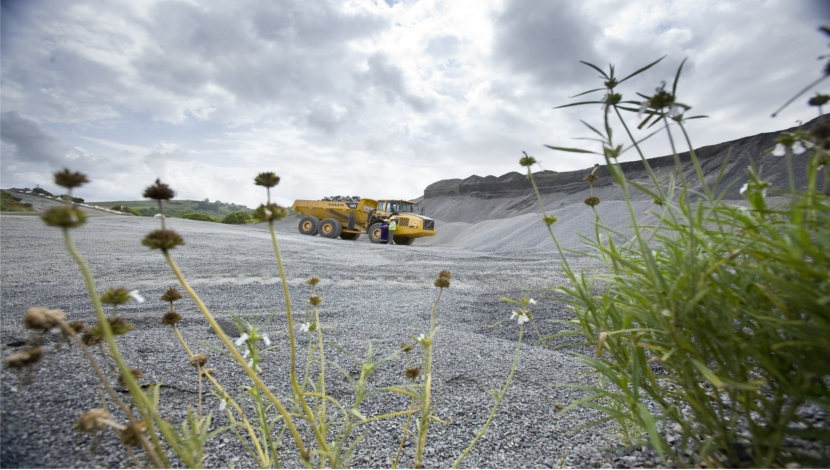

AfriSam has long led the charge in the cement sector for a cleaner environment, and continues with a range of initiatives to maintain the momentum toward a greener planet.
Nivashni Govender, environmental specialist at AfriSam, says: “South Africa is one of the top ten CO2 emitters in the world, when measured per capita. This places a huge responsibility on the cement manufacturing sector to be proactive, as the country has committed to reducing greenhouse gas emissions by 34% by 2020.”
Having established its own environmental department back in 1992, and developed an environmental policy two years later, AfriSam has also initiated a number of air quality management improvements and upgrades in cement kilns and emission filters have led to the lowest dust emissions in Africa.
“Our ongoing focus on alternative fuels and resources (AFRs) has enabled us to steadily reduce the amount of coal burnt in our cement kilns, contributing to lower CO2 emissions,” she says. “We have developed a way of burning old tyres in our Dudfield plant – a strategy that also helps to address the environmental hazards of tyres when disposed of in landfill.”
Energy conservation is ongoing, and includes progressive installation of energy efficient lighting across the company’s cement, readymix and aggregate quarry facilities. As water scarcity becomes a pressing issue for countries like South Africa, water conservation is also high on AfriSam’s environmental agenda, says Govender.
“Our programmes focus on reducing the amount of water per tonne of cement produced or readymix prepared,” she says. “Our readymix plants have strict re‑use and recycling processes, and must recycle at least 50% of grey water generated, on-site.”
The focus includes treating waste at all operations, where the waste stream of products like used oil, conveyor belts and pallets must be recycled to a large extent, and waste must be segregated on site to allow for environmentally friendly disposal. Disposal to landfill is the last option.
“Rehabilitation and biodiversity at our quarries is also a priority, and in 1986, even before this was a legislated requirement for mines, AfriSam formed the first trust of its kind specifically to cater for rehabilitation costs on closure.” she says. “Our current strategy of concurrent rehabilitation – in which we conduct rehabilitation as we mine rather than starting on closure – has proved very effective from environmental, ecological and cost perspectives.”
AfriSam’s focus on biodiversity involves ongoing research to measure the environmental impact of operations on species of flora and fauna, and steps to protect and foster biodiversity, especially where species are endangered or protected by law.
“Environmental protection also has implications relating to cultural heritage, which we take very seriously,” says Govender. “We initiated a process several years ago to conserve an area of underground caves on our property near Sterkfontein in Gauteng – part of a World Heritage Site; working with partners at the University of the Witwatersrand. We are handing over this valuable national treasure for scientific and public use, while continuing to support its maintenance.”
More news
- PART 2: CONCRETE IN THE DESIGN OF A UNIQUE LUXURY HOME IN GEORGE, SOUTH AFRICA
- PART 1: CONCRETE IN THE DESIGN OF A UNIQUE LUXURY HOME IN GEORGE, SOUTH AFRICA
- MVULE GARDENS, AFRICA’S LARGEST 3D-PRINTED AFFORDABLE HOUSING PROJECT
- PART 3: HARNESSING THE POTENTIAL OF HIGH SULPHUR FLY ASH IN CONCRETE PRODUCTION
- PART 2: HARNESSING THE POTENTIAL OF HIGH SULPHUR FLY ASH IN CONCRETE PRODUCTION





